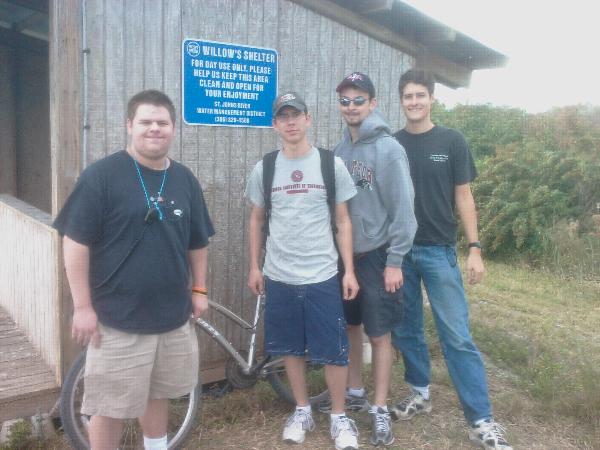Come on and take a walk with me. We're going to the Crawford Science Tower...I have a secret to share with you.
Years ago, Dr. Lynn Edward Weaver, a professor here at FIT, was performing experiments in using ionizing radiation to treat wastewater. He used Cobalt-60, a mildly radioactive isotope, to destroy bacteria in sewage. The experiments were scientifically successful, but the public had a somewhat irrational fear of "radioactive water," so the idea was scrapped in the 1960s.
A problem that the school faced, though, was finding a place to store the harmful radioactive materials after they were used. So they dug a hole. A deep hole. This is where the atomic waste would be stored, and it would come to be known as The Atomic Toilet.
Alright come on and hurry. It's 9:00 PM, and there won't be too many people in the building at this hour, but we still do not want anyone getting curious. Come through the door. Let's go down the stairs.
Here, turn your flash light on, it's dark in here.

Come on inside...Try not to kick the door...It's not in very good shape.
Oh, also, don't step in that smelly, rusty water on the floor. It's groundwater seeping onto the floor, rusting out all of the metal in here. It'll stain your clothes.
Welcome to the Atomic Toilet. It is pitch black in here, I know, but the camera's flash will allow us to survey the damp room more easily.
There's the old typewriter underneath the big "DANGER: RADIOACTIVE MATERIALS" sign.
Nobody knows why it's here, but it hasn't been touched in years.
There's the doorway through which we entered. Our three friends are studying the ventilation system of the "outer toilet."




 You see the trolley track on the roof up there? Also, you can see that the school has started using this place for storage...The tables and the overhead projector all came in after the Cobalt-60 was removed.
You see the trolley track on the roof up there? Also, you can see that the school has started using this place for storage...The tables and the overhead projector all came in after the Cobalt-60 was removed.
Our friend is studying something over in the corner. Let's go take a look.
Alright, we've been down here for at least 20 minutes now. Even though there's not enough background radiation in here to seriously harm us, it's best if we don't spend too much time down here. Let's go on back up the stairs.
Hmm, look at that chart over there. Being engineers, our friends absolutely must study any chart they come across.

BREAK!!






